Prepare for Overwatch – A chat with senior game designer Michael Chu
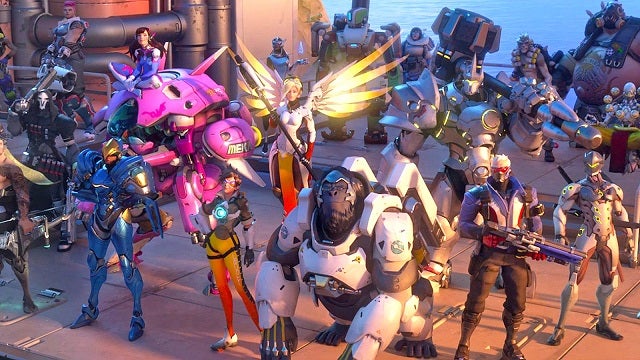
The most anticipated first person shooter of the year has finally finished its perilous journey through the halls of development to the wide world. What a relief. Overwatch’s open beta teased over nine million players with a taste of Blizzard’s first new IP in fifteen years, and the reaction has been somewhat rapturous.
In the hours before launch I managed to steal some time with Michael Chu, senior Overwatch game designer and industry professional whose intimidating CV includes World of Warcraft, Diablo III and Knights of the Old Republic 2. We talked about Blizzard’s plans for the game’s expanded universe, game balancing, and why you can’t peek at your score mid-game.
More than any other major Blizzard title Overwatch has difficulties exploring its lore in-game. We’ve all seen the animated shorts, but can we expect any narrative moments within Overwatch itself?
Early on when we were setting out to make Overwatch we realised that we weren’t going to be able to focus on doing traditional narrative inside the game; ultimately we wanted to focus on multiplayer team-based combat.
Related: Battleborn vs Overwatch – What’s the difference?
What we decided was that most of the storytelling we would do would be either environmental (so you’re running around the world and see things in the maps, and heroes say things to each other) or through the comics, graphic novels, and animated shorts.
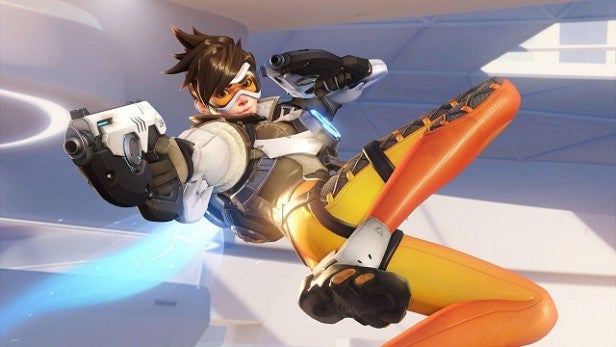
One thing we have done is that we’re trying to bridge the gap between the in-game experience and out-of-game. For example, we’ve tried to reflect what happens in the animated shorts back into the game. That’s one way that we’ve been looking at moving the story forward.
You’ve released around 45 minutes of animated footage before the game’s even released. Are you intending on remaining so prolific for the game’s lifespan?
We don’t have a specific plan for how we’re going to continue to be releasing things but we’re definitely interested in continuing working in these different mediums – it seems like they’ve been well received and we love making them. I think the biggest piece on the horizon is the graphic novel which provides a view into the earliest days of the Overwatch universe. It tells the story of how the first Overwatch team get together. That should be pretty fun.
That’s the ‘Omnic Crisis’ right? Where man and machine go to war. Information on that has been very sparing so far.
That’s exactly what the graphic novel goes into! You’ll get to see some of the Overwatch characters in their younger days and why they turned out how they did.
Multimedia approaches are really popular at the moment. Have you ever considered writing short stories like Riot has done for its League of Legends champions?
We’ve done a little bit of longer-form writing stuff but they’ve primarily been quasi-non-fictional. For me, personally, it feels like the Overwatch universe and the heroes lend themselves to more visual, dynamic storytelling. Obviously comics are a perfect fit and the same goes for graphic novels, and of course, seeing the characters come to life in the animated shorts is such a treat.
Buy Overwatch Origins Edition from Amazon
Overwatch’s visual design is actually one of the most interesting things about the project. What inspired the bright, Pixar-like aesthetic?
We definitely wanted to make something which was accessible and something that was vibrant and we’ve always talked about doing the bright, optimistic vision of the future. I think that it’s really testament to our amazing art team who have really envisioned this diverse, exotic image of the future and heroes that really jump out at you.
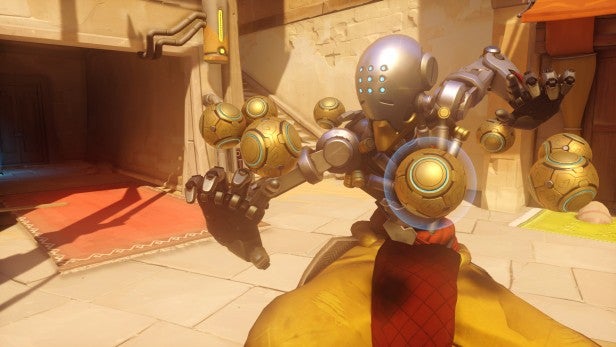
In a way it’s another iteration of the Blizzard art style; it’s big, it’s bold, it’s colourful and everything pops out of the screen. I think that’s where that particular look came from.
One of the consequences of this optimism is that people seem to be introducing children to Overwatch where usually they would avoid playing FPS games with their seven year old. What do you think of that?
We were hoping that Overwatch would appeal to a lot of different people. We wanted to make something that felt accessible and I think that the art style and easily graspable gameplay is really what provides that window and we’re hoping that as many people as possible will play the game.
The MOBA influence on the game is clear but Overwatch only features one true melee hero and no mage-like heroes. Could we see more diversity moving forward?
What’s great about Overwatch is that I don’t feel there are a lot of rules about what the heroes can be. Take a character like Mercy: she follows the healer archetype and it’s really great because it’s a very different style of gameplay. When you’re playing her you feel like you’re in a World of WarCraft raid – keeping everyone’s health topped up and giving them a damage boost – and that’s really cool. Then you move on to a character like Lúcio and the game takes on a Jet Set Radio vibe. Anything is possible. As far as spellcasters go, I don’t know. That’s too magical for me…
But what about an ‘Overwatch-esque cyborg caster’ or something similar?
Anything is possible. The thing about melee characters is that they’re challenging to integrate into these games, but Reinhardt feels pretty satisfying. He’s one of my favourite heroes and I love playing him. One of the first ‘ding ding ding’ moments I had when I was playing Overwatch after joining the development team is when I popped that shield up and the camera dropped into third-person. I was like ‘That is so cool! What a great idea.’
That perfectly segways into my next question. Overwatch is extraordinarily readable in spite of 12 heroes with 48 abilities potentially flying about. How did you stop it from becoming a jumbled mess?
Clarity in the game is one of our biggest focuses. There are so many things that go into that: the UI team are great and they keep everything simple and understandable. You’ve really got to be able to pick out information in Overwatch really quickly. There’s also the sound design to consider like when you’re picking up on audio cues. What’s going in-game on is really complicated but the sound team did an amazing job of making things clear.
Related: Overwatch Character Class Guide
One of my favourite examples is the low-health breath. It’s like ‘[sharp inhaling sound]’ – why would anyone do that? But what it does is so clear, you get it, and nothing else will distract from that vital piece of information. The other huge part is the visuals, which is a constant process of iteration and refinement which the designers work on. They start off with how things are gonna look and then it’s just ‘simplicity, readability, understandability’. It’s very important to us.
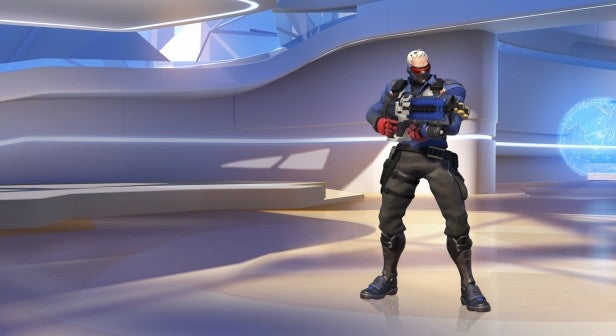
The game currently has four game modes – are there plans to expand that? During the beta players were hankering after more freedom; hence the addition of ‘custom’ mode.
Obviously we’re not going to introduce a mode like team deathmatch; it’s not quite right for the game. As long as we’ve been working on the game we’ve been trying out and experimenting with new game modes. The most important part of Overwatch is the heroes and so it’s a case of finding game modes where the heroes can use all their abilities and they’re not restricted. The focus is on that, how people play as a team, and how these interact with gameplay objectives. That’s something we’re always experimenting with hopefully we’ll find some new ones in the future.
Another area of experimentation is just stuff on the maps – moving platforms that kind of thing. We totally hear the community’s desire there and it’s something that we want to facilitate. Let’s see what the future holds.
I do love popping a turret-mode Bastion on that moving platform in Volskaya industries….
[Chortles]. I’m not actually convinced that that’s effective but I have to do it every time because it’s so hilarious.
It was a controversial decision to restrict control over maps and modes – players get no say. Why did you implement Quick Play and Ranked that way?
That’s a good question! We want people to play all of the different maps and game modes just like we want people to switch between the different heroes. We want the community to have a diverse and interesting experience.
You’re audience also looks to be diverse, possibly more so than ever. How did you ensure that Overwatch would be a comfortable fit on all three platforms? The PC and PS4 are worlds apart and Blizzard is a PC specialist.
Obviously there’s a large audience that already plays FPS games on PC, but also a huge console audience. I myself love playing the games on the couch with the big TV – it feels really good! Early on in Overwatch’s development we felt that it had a great opportunity to speak to the console audience: we thought that the limited ability sets and [first person shooting] mapped really well to a console controller.
Related: Battleborn review
Primary differences were the control scheme and balancing. We actually balance the games slightly differently on PC and console, to accommodate different modes of play. Things like hero damage are scaled differently. Tobjorn and Symmettra’s turrets are nerfed on PS4 and Xbox One for instance, because they have advantage in a console environment.
Across these platforms an astounding nine million participated in the beta. Is that really a beta or just a huge advertising campaign? Do you really need that much data?
For us the betas really are primarily about testing. Overwatch actually had a long closed beta which was restricted to a much smaller audience, much to the annoyance of a lot of people. What we wanted initially was a small core audience that we could easily monitor and the ability to make gameplay changes at a rapid pace. We generated really focused feedback and learned so much during the changes from that period.
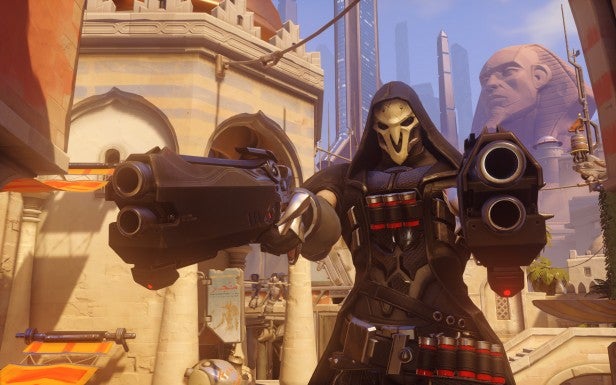
Ultimately the open beta is more about testing the servers and making sure they can handle the load of a large number of players, which is why that period of the beta was much shorter than the initial one.
You think that you’re prepared for half the world’s population to descend into Overwatch when it launches?
Touch wood!
I played the beta for a long while – lots of map changes were made, but almost no hero abilities disappear or get replaced entirely. I found that rather unexpected in a testing phase.
I think the last ability to disappear was probably one of Bastion’s many ultimate abilities. He wasn’t always a tank, originally Bastion had a little remote control connected to a mine that would drive around the field and explode. This actually ended up becoming Junkrat’s RIP tire instead, which is a much more interesting use of a mobile explosive.
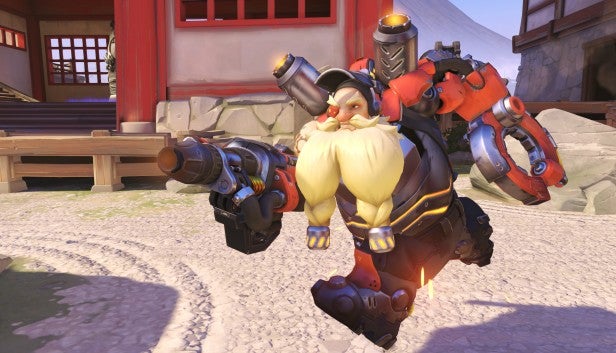
It’s interesting because there were two good reasons for us to change that ultimate ability. One of them was that it wasn’t good for Bastion – he definitely didn’t need it – and the other was that it just felt kind of out of character for him. I think that’s the last wholesale change we made, but what I find really fascinating is that the designers really want to maintain the hero’s core character. They want to keep that fantasy alive whilst avoiding making nickel and dime changes. Earlier on in the design process they swing larger because they could, but what they ended up with stays true to each hero and their experience.
Your approach to scoreboards and ranked is somewhat fluffier and friendlier than other FPS games (kills and assists merged, for instance). Do you think that’s going to alienate hardcore players who want the brutal stats laid in front of them?
There are players who really want the scoreboard, and they really want to know how many kills they have, but ultimately we want everything to focus on players working together as a team. Removing the scoreboard in the game helps that. One day Jeremy Craig on the design team said ‘what if we just get rid of the scoreboard’ and people were like ‘that sounds crazy!’ but very quickly we realised that if we weren’t focusing on the score, we could just concentrate on the game. There was less talk about people not pulling their weight and so forth. It kept the focus on the team and victory which is what we’ve always wanted. We want you to care about winning, not about how you’re performing on your own.
You say that, but part of me is always not-so-secretly hoping that I’ll be awarded ‘play of the game’ at the end of the match.
I think that’s good though – play of the game and medals that get awarded at the end of the round are a great way for the team to identify contribution and success. But in the actual playing, you should be feeling like winning is the ultimate aim.
Speaking of winning, community toxicity is always a problem in online games, but in Overwatch it seems remarkably low so far. Why?
It’s something that we’re tremendously concerned about. We’ve tried our best to do what we can. We have controls for muting other players and so forth. We try to take feedback into account and hopefully what we’ve implemented so far will have a positive effect.
But surely the situation will get worse once the game is opened up to the public? Beta communities are always less spiky.
We’re hoping that the game will foster positivity…
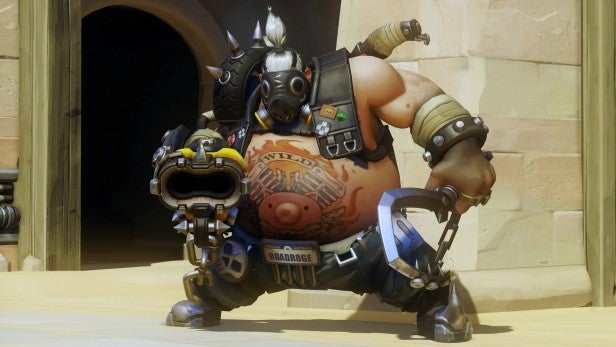
During the beta ranked mode experienced serious problems with players abandoning games. How are you addressing that issue before release?
I don’t have the exact details but the leaver issue is definitely an issue which we’re looking at improving before the actual game release.
Which is tomorrow…
I don’t have the answer but we could probably find out.
Have you thought of implementing some kind of penalty system? That would sort out your game leavers and your ragers.
One thing we’ve tried to do as a team in how we communicate with the community is to be open with them and be honest. Hopefully all of these efforts and decisions will pay off.

